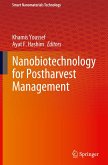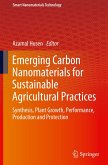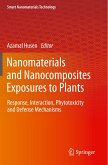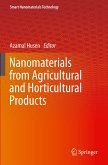Nanobiotechnology has emerged as an innovative and rapidly advancing field that combines the progress of nanotechnology with biological sciences, especially cellular and molecular biology. Several metal and metal-oxide nanoparticles (NPs) have shown great potential in boosting the performance of agricultural crops under challenging conditions. NPs enhance plant resistance to stress by strengthening physical barriers, facilitating the uptake and transport of essential minerals and nutrients, improving photosynthetic efficiency, increasing the synthesis of anti-stress compounds, and modulating hormone balance, mainly auxins and gibberellins, thereby promoting plant tolerance to various abiotic stresses. Due to their high surface energy and large surface-to-volume ratio, NPs exhibit superior bioavailability and bioactivity compared to their bulk counterparts. This book offers readers a thorough, up-to-date overview of how NPs impact crop responses at the molecular, cellular, metabolic, biochemical, and physiological levels, particularly under stressful conditions. In terms of physiology, NPs enhance stomatal behavior, boost photosynthesis, improve water use efficiency, and promote seed germination and growth. Biochemically, they alter metabolite profiles, reduce the accumulation of reactive oxygen species, and increase the activity of various antioxidant enzymes. NPs also improve lipid, protein, and glucose metabolism, as well as better regulate secondary metabolites like flavonoids and phenolics. At the cellular level, NPs help maintain osmotic balance, ion homeostasis, and membrane stability. On a molecular level, they affect stress-responsive transcription factors, influence gene expression, and impact signaling pathways such as calcium signaling. However, NPs can also have negative phytotoxic effects, such as inhibiting germination, stunting plant growth, disrupting cellular metabolism through oxidative stress, and damaging proteins and DNA, ultimately leading to reduced crop yield and performance. These adverse effects are typically observed at higher NP concentrations, though they can vary by plant species. Therefore, it is essential to standardize different NP formulations, concentrations, and delivery methods for various crop plants. This book is an invaluable resource for advanced students, faculty, scientists, and researchers in fields such as nanobiotechnology, plant biology, plant biochemistry, plant physiology, plant stress physiology, plant microbiology, soil microbiology, agricultural sciences, botanical and crop sciences, environmental botany, and related disciplines.
Bitte wählen Sie Ihr Anliegen aus.
Rechnungen
Retourenschein anfordern
Bestellstatus
Storno








